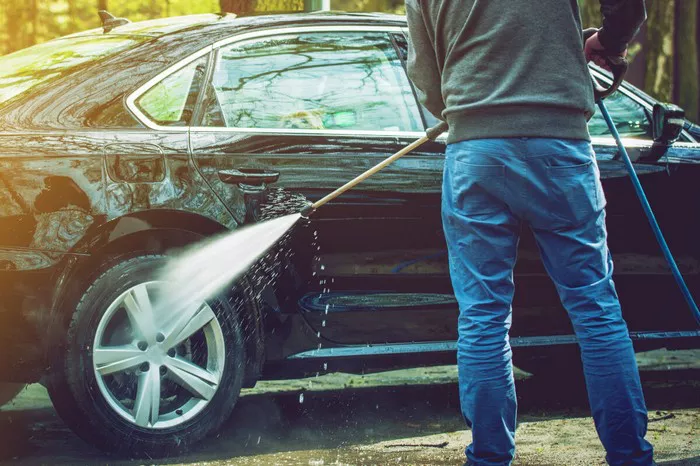Pressure washers are powerful cleaning tools that use a concentrated jet of water to remove dirt, grime, and mold from various surfaces. Commonly used for cleaning decks, driveways, and patios, they can also be effective for washing cars – but with caution. This guide explores the potential risks of pressure washing your car and provides essential techniques for safe and effective cleaning.
The Pressure Washer and Your Car’s Paint
The high force of water expelled by a pressure washer can be a double-edged sword. While it efficiently removes stubborn dirt, using it incorrectly can easily damage your car’s paint. Scratches, etching, and even complete paint removal are all possibilities with improper technique.
See also: Safe Pressure Washing Your Car
Understanding the Risks
There are several ways pressure washing can harm your car’s paint job:
1. High Pressure: Excessively high pressure settings act like a sandblaster, stripping away paint and leaving the underlying metal exposed.
2. Narrow Spray Nozzles: These concentrate the water force into a tiny area, increasing the likelihood of damaging the paint.
3. Incorrect Wand Distance: Holding the spray wand too close to the car intensifies the water pressure and can etch or remove paint.
4. Pre-Existing Paint Damage: Pressure washing can worsen existing scratches, chips, or peeling paint.
5. Loose Dirt/Debris: If not rinsed away beforehand, loose dirt and debris caught in the water stream can act like sandpaper, causing scratches.
Safe Pressure Washing Techniques for Cars
To ensure a clean car without harming the paint, follow these essential pressure washing practices:
1. Pressure Settings: A safe PSI (pounds per square inch) range for car washing is generally between 1200 and 1900. GPM (gallons per minute) is less critical but consider a lower GPM for better control. Always refer to your pressure washer’s manual and car owner’s manual for specific recommendations.
2. Wide Fan Nozzle: Always use a wide fan nozzle for car cleaning. This spreads the water pressure out over a larger area, minimizing the impact on the paint.
3. Maintain Distance: Keep the spray wand at least 30 centimeters (1 foot) away from the car’s surface.
4. Pre-Rinse is Key: Before pressure washing, thoroughly rinse the car with a regular garden hose to remove loose dirt and debris. This prevents them from scratching the paint during pressure washing.
See also: DeWalt Pressure Washer Oil Capacity and Recommendations
Additional Considerations
1. Paint Condition: The age and condition of your car’s paint also play a role. Very old, neglected, or single-stage paint is more susceptible to pressure washer damage. If unsure about your paint’s condition, consult a professional detailer.
2. Heavily Soiled Cars: For excessively dirty cars, consider a two-step approach. First, use a gentler wash method like a foam cannon and wash mitt to loosen dirt. Then, follow up with a low-pressure rinse using the pressure washer with a wide fan nozzle.
Conclusion
Pressure washers can be a valuable tool for keeping your car clean, but proper technique is crucial to avoid damaging the paint. By following the recommended pressure settings, using a wide fan nozzle, maintaining a safe distance, and pre-rinsing, you can achieve a sparkling clean car without harming the finish. If your car has extensive paint damage or you’re unsure about using a pressure washer safely, consider consulting a professional detailer who can recommend the most appropriate cleaning method.

